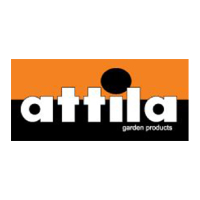

Volpi KV310
Battery-Powered Shears
14.4V - 2.5Ah / 150W
Ø branches: 30 mm
Pruning is a fundamental practice to maintain the health and beauty of your garden. By removing dead or damaged branches, promoting vigorous growth, and maintaining the desired shape of plants, pruning helps ensure your green space flourishes in all its splendor. However, to achieve optimal results, it's essential to use the right tool for the job. A quality pruner can make the difference between a clean, effective cut and accidental damage to plants.
Additionally, choosing the right tool means considering your personal needs and preferences, such as ease of use, power, and portability. Investing in a pruner suited to your needs will not only improve the effectiveness of your pruning work but also prolong the life of your plants and contribute to creating a healthy and attractive garden.
This guide will explain how to choose the most suitable pruning tool for your needs.
Pruning shears or secateurs are precision-designed to cut branches and stems with ease and accuracy, ensuring clean pruning that doesn't harm plants. Ideal for cutting small-diameter branches.
Lighter and more compact than pruners, shears allow the operator to clean and trim fruit trees or shrubs in tight spaces with dense branching. Equipped with sharp blades, pruning shears can be manual or battery-powered.
Battery-powered pruning shears are typically equipped with lithium batteries, ensuring optimal working time without interruptions for recharging. Battery power, compared to manual shears, increases cutting frequency and prevents operator fatigue. To avoid wrist strain, battery-powered pruning shears often feature an ergonomic handle and an ultra-lightweight design for comfortable grip during prolonged use.
Professional pruning shears are versatile tools used for pruning trees, shrubs, bushes, and ornamental plants. For more demanding tasks, such as tall shrubs or where manual shears would be impractical, the pruning shears can be mounted on a pole. The pole-mounted configuration is very useful for making precision cuts in hard-to-reach positions.
Compared to a brush cutter or hedge trimmer, pole-mounted pruning shears allow for meticulous and detailed work. They are particularly useful for reducing vegetation volume and shaping plants, promoting healthy and lush growth.

Electric pruners, which resemble small battery-powered saws, are an important resource for those working in agriculture or maintaining green spaces. Among the most versatile and valuable tools, pruners allow for extremely precise cutting of medium-sized branches, ideal for refining hedges or shrubs.
To maximize practicality and freedom of movement, many prefer battery-powered pruners. A pruner with lithium batteries ensures long battery life and greater operational flexibility. Lightweight is another factor to consider: a pruner weighing less than 2 kg allows the user to handle it easily with just one hand. 20 V or higher battery pruners have a design similar to a lightweight and compact chainsaw. They typically have a cutting capacity equal to or greater than 100 mm in diameter, with a chain blade of variable length.
Like shears, pruners can also be mounted on poles, facilitating cutting and pruning tasks that are difficult to perform with a standard manual grip. Pruners can be found with:

Another very useful tool for gardening and agriculture is the tie machine. Its primary function is to bind fruit-bearing or climbing vines to supports, such as poles or nets. Particularly useful in viticulture, horticulture, and floriculture, using a tie machine contributes to optimal vegetation distribution, promoting plant growth.
There are different types of tie machines, the most common being:

Regular pruning ensures the health and shape of plants, offering significant benefits for their development. Pruning promotes vigorous and lush growth by removing dead, diseased, or damaged branches that could slow growth or compromise the plant's overall health. Pruning also encourages the formation of a strong, balanced structure, promoting healthy growth, the flowering of new shoots, and fruit production. Pruning also adds an aesthetic touch to plants, allowing them to be shaped and their growth controlled to achieve desired forms and sizes.


































